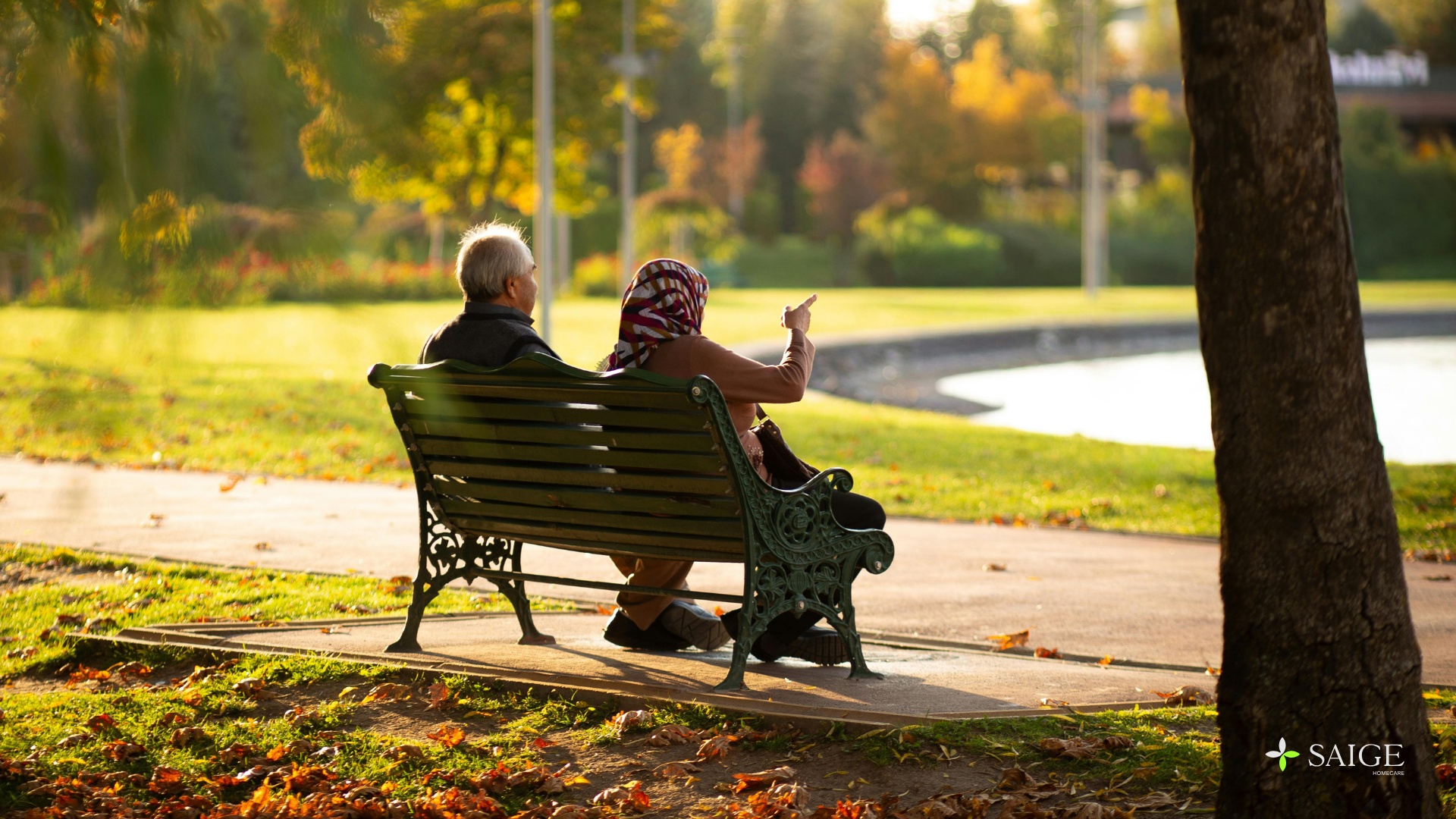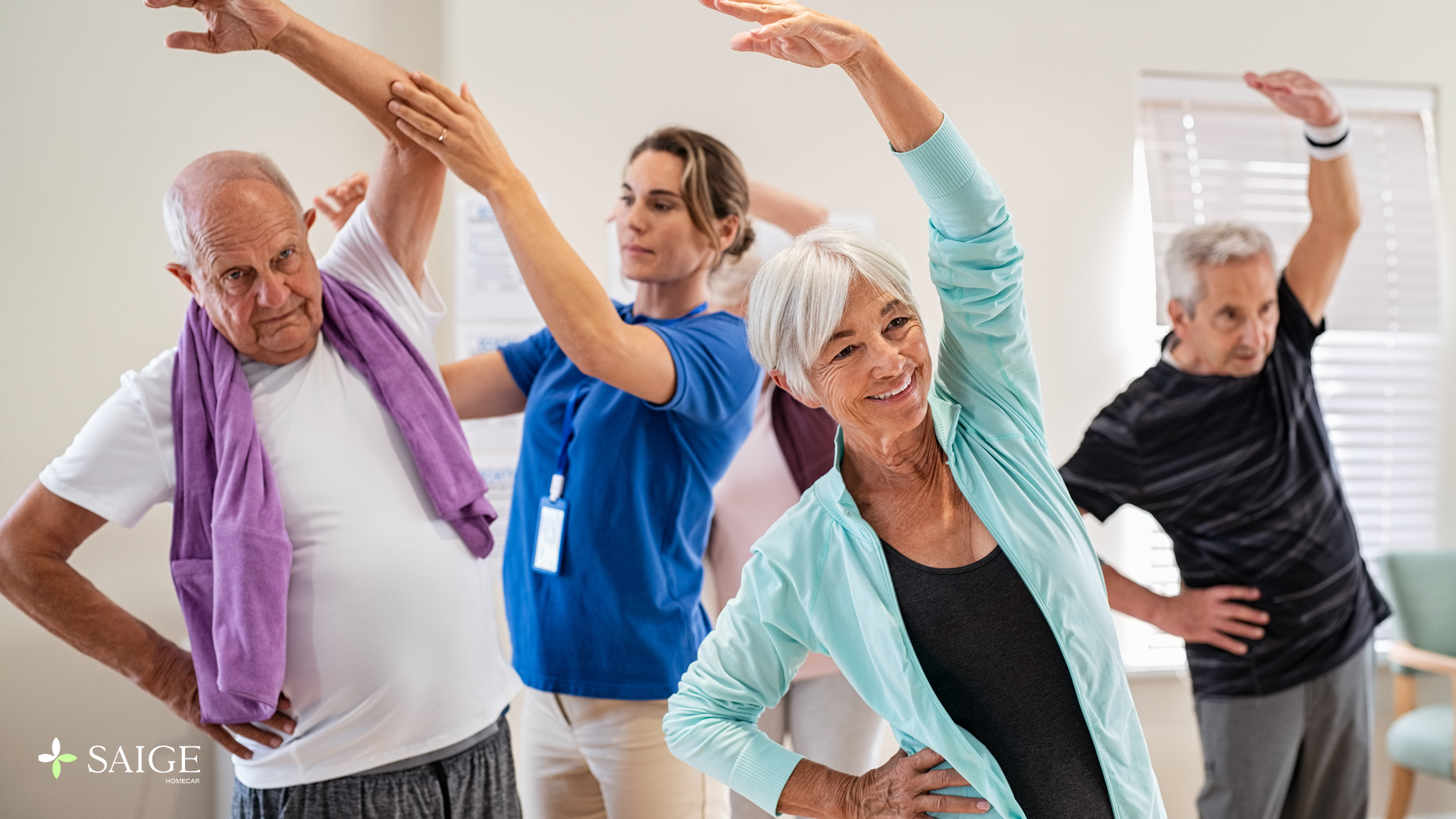How can I make my home safe for seniors? Aging in place allows older adults to remain in the comfort of their own homes, but it requires key home modifications to ensure safety and accessibility. By making thoughtful adjustments, seniors can maintain independence, reduce fall risks, and age gracefully in a secure environment.
Canada’s senior population is projected to reach 9.4 million by 2030, with many choosing aging at home over moving to care facilities. However, caring for elderly loved ones at home comes with risks that must be addressed.
In Canada, falls are the leading cause of injury-related hospitalizations among adults aged 65 and older, significantly impacting their quality of life. Simple changes, such as installing sturdy handrails, bright motion-sensor lights, and improved lighting in blind spots like under the sink, can make a significant difference. Having homemaker services provide expert guidance on elderly home safety can further enhance senior care and peace of mind.
This article provides a guide on how to transform your home into a safe haven due to safety concerns for elderly persons. You can also find a home safety checklist for seniors to help you determine whether your home is safe from hazards.
Here is a checklist table for aging in place:
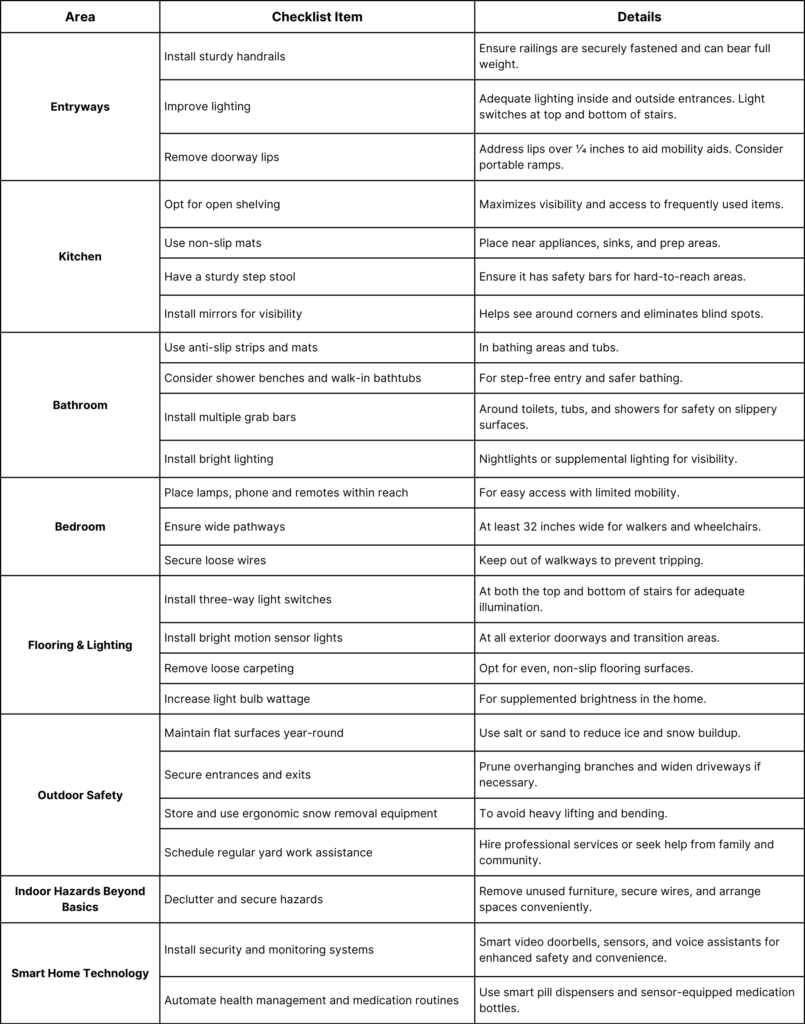
Conducting a Room-by-Room Safety Assessment
As we age, our homes should be places where we feel safe and comfortable. Unfortunately, studies indicate that 60% of falls happen in our homes. It is, therefore, important that we do our best to make our homes safe and comfortable for our aging adults.
The first step to doing that is to conduct a thorough walkthrough of your home. Here are some priority areas to assess to prevent falls and other potential hazards:
1. Entryways
Entryways should be safe, well-lit, and accessible to prevent trips and falls.
✅ Install sturdy handrails on both sides of stairways, ensuring they can support full body weight.
✅ Position railings 32-36 inches above the stairs for secure grip and stability.
✅ Ensure light switches are placed at both the top and bottom of stairwells for better visibility.
✅ Use motion-sensor lighting to automatically illuminate entry points at night.
✅ Remove doorway lips over ¼ inch or install portable ramps to prevent mobility aid obstructions.
✅ Keep fire safety equipment nearby, including a fire extinguisher and smoke alarms, and ensure emergency numbers are accessible.
A senior using a walker finds it difficult to open the door and step over an entry threshold. In this case, a small ramp and smart door lock will allow them to enter safely without assistance.
2. Kitchen
A well-lit, organized kitchen helps prevent accidents, burns, and falls while making daily tasks easier.
✅ Ensure proper lighting throughout the kitchen, especially near cooking and prep areas.
✅ Increase light wattage or use LED bulbs for better visibility, reducing strain on aging eyes.
✅ Install under-counter lighting to brighten countertops and eliminate shadows.
✅ Use mirrors or angled security mirrors to improve visibility around corners and prevent collisions.
✅ Keep frequently used items within easy reach to avoid stretching or using step stools.
✅ Use induction cooktops and auto shut-off appliances to reduce fire risks.
✅ Place non-slip mats near the sink and stove to prevent falls.
If a senior with arthritis struggles to turn off the stove, an induction cooktop with an auto shut-off timer prevents overheating and burns.
3. Bathroom
Slippery surfaces and poor lighting make the bathroom one of the highest-risk areas for falls.✅ Install multiple grab bars near toilets, tubs, and showers for added stability.
✅ Use non-slip mats and adhesive strips in the shower and on tile floors.
✅ Ensure bright overhead lighting to improve visibility.
✅ Add night lights or supplemental strip lighting along pathways to prevent falls during nighttime trips.
✅ Install curbless walk-in showers for step-free access and consider a shower bench for safety.
✅ Use smart temperature-control faucets to prevent accidental burns.
Consider checking a medical supply store or browsing online for options that will help you with safety modifications.
A senior with balance issues will have difficulty stepping into the bathtub. A barrier-free shower with a bench allows safe, independent bathing.
4. Bedroom
A safe and well-organized bedroom reduces the risk of falls and mobility challenges, especially during nighttime movements.
✅ Ensure pathways between bedroom furniture are at least 32 inches wide for easy navigation with walkers or wheelchairs.
✅ Consider rearranging furniture to create clear walking spaces and ensure easy access to essential items.
✅ Check that beds are at a safe level for older adults—knees should be at a 90-degree angle when seated on the edge of the bed.
✅ Install motion-sensor under-bed lighting to illuminate pathways during nighttime trips.
✅ Keep cell phones, remotes, and emergency call buttons within arm’s reach for quick access.
A senior using a walker finds it difficult to move around the bedroom due to narrow spaces. Rearranging furniture and ensuring wider pathways allow for smoother and safer mobility.
5. Living Area
The living area should be organized, well-lit, and free from tripping hazards to ensure a safe and comfortable environment since this is a space in the home where people spend most of their time during the day.
✅ Arrange furniture to maintain clear walking paths of at least 36 inches for easy movement.
✅ Set up a charging station near seating areas to keep phones and medical devices powered and within reach.
✅ Secure loose rugs and cords to prevent tripping accidents.
✅ Use chairs with armrests and firm cushions to make sitting and standing easier.
✅ Pets make great companions but can be a fall risk—train them to avoid running in front of seniors and keep pet beds in designated areas.
A senior tries to charge their phone but has to walk across the room to reach an outlet. Adding a nearby charging station ensures easy access to emergency calls and medical devices without unnecessary movement.
6. Dining Room
Eating comfortably requires stable furniture and easy-to-use utensils.
✅ Ensure dining chairs are sturdy, with proper back support and armrests for added stability.
✅ Use non-slip placemats and spill-proof cups to minimize messes.
✅ Try ergonomic utensils with larger grips for easier handling.
A senior with hand tremors finds it difficult to hold a fork. Weighted utensils with non-slip handles improve grip and control.
7. Flooring and Lighting
Proper lighting and slip-resistant flooring reduce the risk of falls, one of the leading causes of injuries among seniors.
✅ Increase the wattage of overhead light bulbs to improve visibility, especially in dim areas.
✅ Install three-way light switches at both ends of hallways and staircases for easy access.
✅ Use non-slip flooring materials like vinyl or textured rubber to prevent slips.
✅ Secure loose rugs and carpeting or replace them with low-pile, slip-resistant options.
✅ Add glow-in-the-dark strips on stairs for better nighttime visibility.
A senior with vision impairment has trouble seeing the edge of each step. High-contrast stair markings help them navigate safely.
Here is a home safety for seniors checklist that will help you identify potential risks and ensure your home is secure, accessible, and comfortable for aging in place.
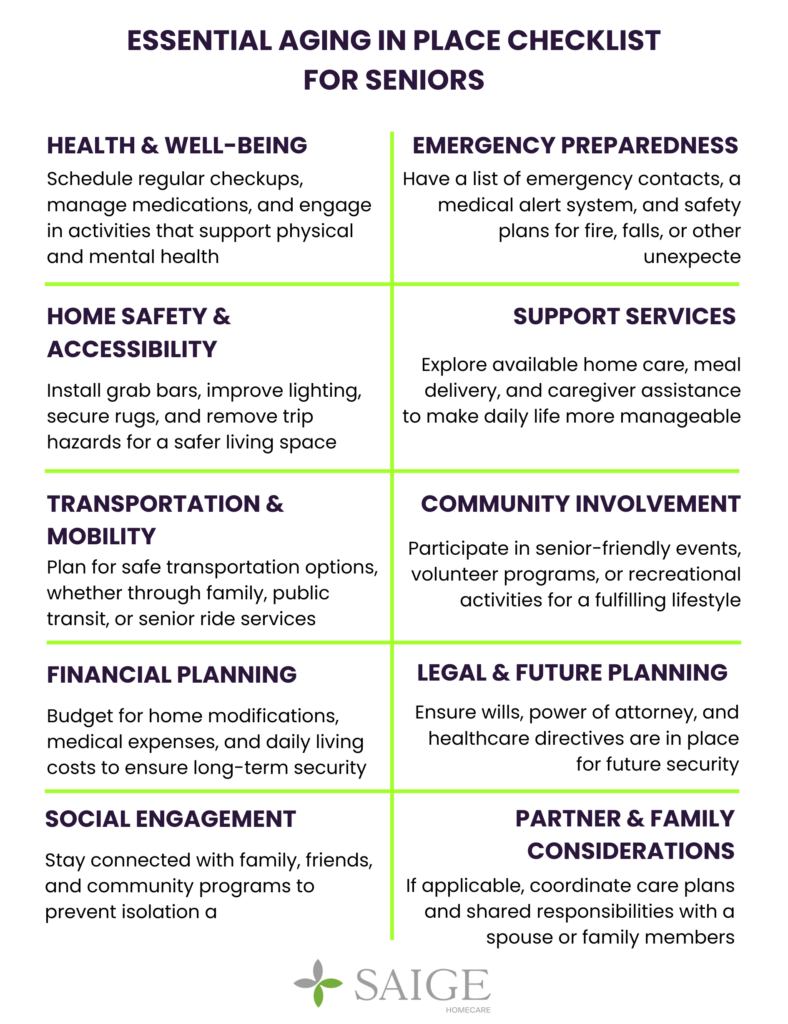
Prioritizing Fall Prevention
About 20-30% of seniors over 65 years suffer a debilitating fall each year in Canada. Thus, it’s important to prevent tumbles when aging to avoid being part of the statistics. Common culprits of such accidents include poor lighting, unstable furniture, obstructed walkways, and throw rugs.
Medical alert devices, especially those with automatic fall detection, are useful safeguards for older adults living alone. Medical alert devices like a wearable help button can help in case of an emergency like when falls happen. The wearer can simply push the button to connect with a 24/7 monitoring center for emergency assistance.
A smart wristband can also provide fall detection alerts and should be worn at all times due to potential hazards. For aging adults with mobility limitations, installing stair lifts, grab bars, and ramps can help to minimize fall risks. Here are some aging-in-place safety tips to help seniors live independently and securely at home.
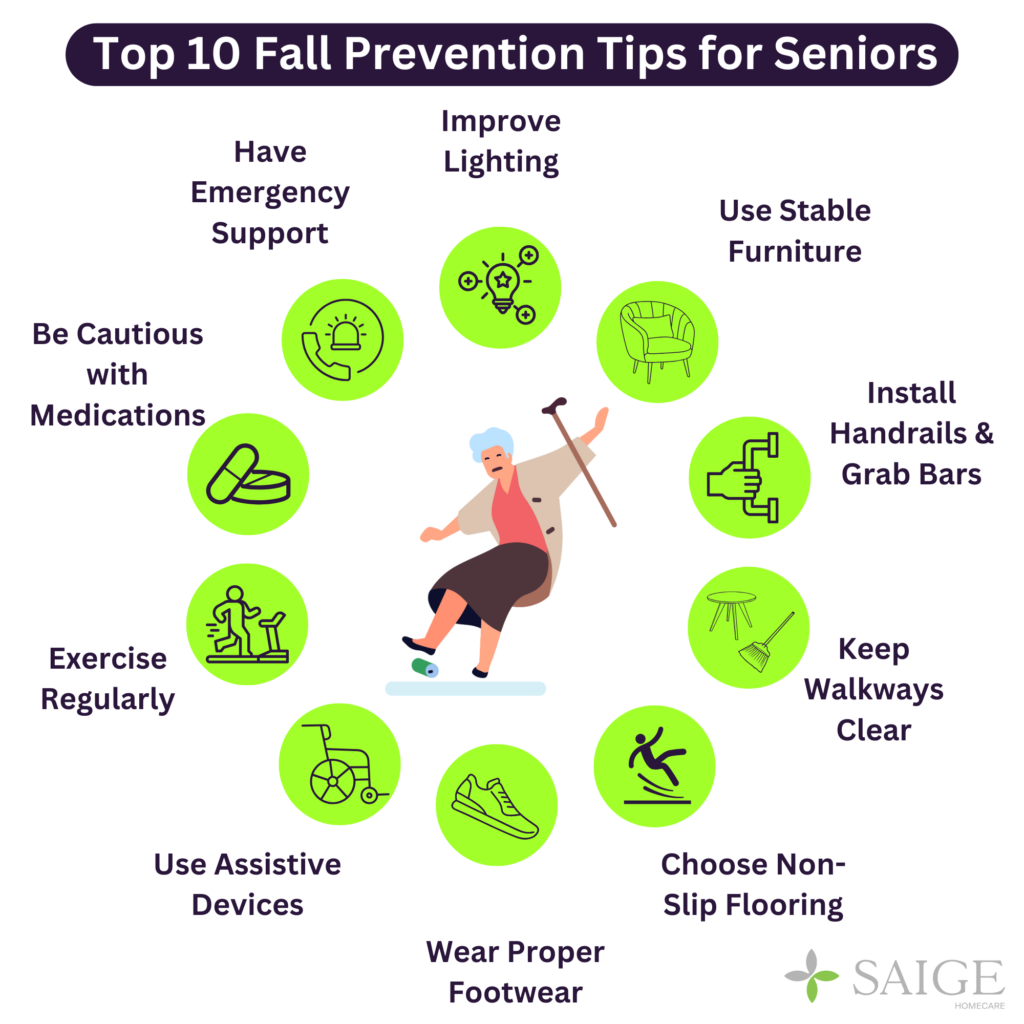
Focusing on Outdoor Safety
Assessing indoor hazards is crucial for home safety for seniors, as discussed earlier. But evaluating the external environment for fall risks, for instance, is equally important for home safety. Here’s how to ensure your home security for those around you:
1. Ensuring adequate outdoor lighting: Install bright motion sensor lights at all exterior doorways and transition areas. This ensures automatic illumination of entrance areas when approaching after dark. Solar-powered pathway lighting along walkways and steps can complement stair railings. This is essential for support when navigating changes in elevation.
2. Maintaining flat surfaces year-round: Use salt, ice melt products, or sand generously to reduce slippery ice and snow buildup on sidewalks. This should apply to the steps and ramps during Calgary winters. Keep front steps and walkways always cleared of snow and debris. Immediately address raised paving stones or cracks in sidewalks that can trip those with shuffling gaits.
3. Securing entrances and exits: Prune overhanging tree branches above doorways, where falling debris can obstruct safe passageways. Widen the driveway if necessary to comfortably accommodate ambulances in emergency cases. Routine driveway and walkway maintenance helps to fill cracks and holes preventing tipping hazards.
4. Storing and using snow removal equipment: To avoid heavy lifting and repetitive bending, use an ergonomic snow pusher to clear walkways. Keep salt buckets, snow blowers and electric snow shovels in easily accessible exterior sheds. This will ensure that the equipment is on hand when needed without having to haul it from garage interiors. Set up garden hoses for convenience washing outdoor areas.
5. Scheduling regular yard work assistance: Consider hiring a professional lawn care or snow removal service. This will help you to avoid strenuous yard maintenance tasks, especially if you’re aging in place. Most insurers provide snow removal allowances. Alternatively, you can ask family members or neighbors for assistance with seasonal yard needs. You can also explore volunteer programs through local churches or nonprofits matching helpers.
Addressing Indoor Hazards Beyond the Basics
Taking stock of possible stumbling blocks inside an aging parent’s home is more than removing loose rugs and bath mats. It also involves decluttering, securing wires and cables, ensuring proper lighting, and arranging well-trafficked spaces.
* Declutter: Remove unused furniture from pathways. This will allow you to organize essential items in easy-to-reach places and discard unused paper products.
* Secure hazards: Tape down cords and cables out of walkways. Mount TVs to walls to prevent falling and install drawer locks to prevent openings.
* Rearrange wisely: Position beds, couches, coffee tables and chairs for ample walking room. Have grab bars, handrails, and reachers at an arm’s distance.
Senior-Friendly Home Technology Integration
Smart home technology is transforming how seniors maintain independence, safety, and daily routines while aging in place. With the right devices, everyday tasks become easier, fall risks decrease, and families gain peace of mind knowing their loved ones are safe.
Improving Home Security and Safety
One of the biggest concerns for seniors living alone is home security. Thankfully, smart technology provides solutions that allow for remote monitoring and hands-free operation.
1. Video doorbells like Ring or Nest allow seniors to see and speak to visitors without opening the door, reducing the risk of scams or intrusions.
2. Smart locks provide keyless entry, ensuring doors are locked automatically, which is especially helpful for those with memory issues.
3. Motion-activated lighting can brighten hallways and outdoor spaces, reducing fall risks when moving around at night.
Caregivers can receive real-time security alerts on their smartphones, ensuring they stay informed about their loved one’s safety.
Simplifying Health and Medication Management
Managing medications and health appointments can be overwhelming, but smart technology takes the guesswork out of it.
1. Medication dispensers like MedMinder release the correct dosage at scheduled times, with alerts to prevent missed doses.
2. Voice assistants such as Alexa or Google Home can remind seniors to take medications:
“Alexa, remind me to take my heart medicine at 8 AM.”
3. Telehealth services allow seniors to consult doctors from home, minimizing unnecessary travel.
Some smart pill dispensers automatically lock missed doses to prevent overdosing which ensures medication safety at all times.
Making Daily Life More Convenient with Smart Assistants
For seniors with mobility limitations or cognitive challenges, voice assistants act as helpful, hands-free companions that simplify daily tasks.
1. Control home devices with voice commands:
“Alexa, turn on the living room lights.” (Prevents nighttime trips and falls!)
“Google, adjust the thermostat to 72°F.” (Ensures comfort without manual adjustments.)
2. Instantly connect with family or emergency contacts:
“Alexa, call my daughter.”
“Google, set an emergency contact.”
Pre-program smart assistants so that seniors don’t have to set them up manually, making technology more accessible.
Choosing Cost-Effective and User-Friendly Smart Home Devices
Many seniors worry about complicated setups or expensive technology, but today’s smart home solutions are more affordable and easy to use than ever.
1. Medical alert systems like LifeAlert provide emergency assistance with the push of a button.
2. Fitness trackers such as Fitbit or Apple Watch monitor heart rate, movement, and fall detection.
3. Automated blood pressure monitors allow seniors to track health data at home and share results with doctors.
Choose scalable, DIY-friendly smart home systems that integrate with existing devices like smartphones or tablets—keeping costs low while improving accessibility.
Smart technology isn’t just about convenience; it’s a lifeline for seniors living independently. By integrating these solutions, seniors can age safely at home, reduce risks, and stay connected with family and caregivers.
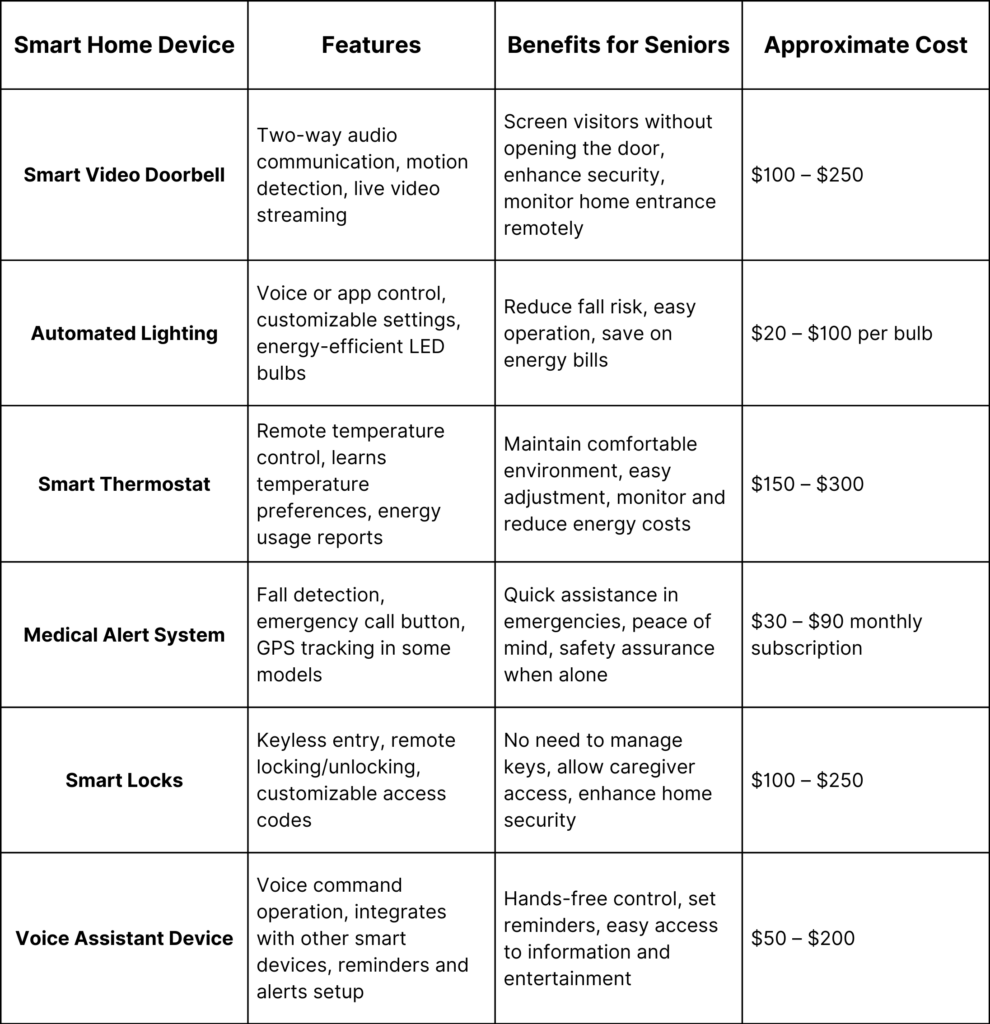
Cognitive Health & Dementia-Friendly Home Design
Seniors with dementia face challenges like memory loss, confusion, and wandering, making home safety crucial. Simple modifications can improve their independence and security.
1. Improve Visual Cues & Contrast:
* Use contrasting colors for walls, floors, and furniture to aid recognition.
* Increase natural and anti-glare lighting to prevent falls.
* Avoid bold patterns or shiny surfaces that may cause disorientation.
2. Create a Structured & Easy-to-Navigate Space:
* Label kitchen cabinets, bathroom drawers, and doors with clear, bold text.
* Keep pathways clutter-free and furniture in familiar positions.
* Use whiteboards or visual reminders for daily tasks.
3. Prevent Wandering & Enhance Security:
* Install auto-locking doors or door alarms to prevent unsafe exits.
* Use “Stop” or “Do Not Enter” signs on restricted areas.
* Secure outdoor spaces with fencing and motion-sensor lights.
4. Incorporate Smart Technology:
* Set up voice-activated assistants (Alexa, Google Home) for reminders.
* Install auto-shutoff appliances to prevent fire hazards.
* Use GPS-enabled wearable devices for tracking in case of wandering.
5. Create a Calming Environment:
* Paint walls in soft, soothing colors to reduce anxiety.
* Display family photos & familiar objects for comfort.
* Use gentle music, textured blankets, or aromatherapy to ease agitation.
Making a home dementia-friendly improves safety, comfort, and independence, allowing seniors to age in place with confidence.
Resources for Aging in Place
1. Build a Support Network: Turn to family, friends, or neighbors for help with errands, transportation, and companionship. Have a backup plan for additional support.
2. Access Local Services: Community programs offer meal delivery, financial aid, and wellness support.
3. Plan for Daily Assistance: Adult day programs provide social activities and meals, while respite care offers short-term support for seniors when caregivers are unavailable.
4. Be Prepared for Emergencies: A medical alert system, GPS tracker, and ID bracelet can ensure quick access to help in case of a fall or health issue.
Make Your Home Safe for Aging in Place
Safety in the home of an older person is crucial. Thus, it’s important to prepare the home for this family member for improved home safety. If you find it difficult to do the home modifications, consider getting a specialist’s knowledge. Professionals have the training to provide you with the necessary knowledge.
This is done through a home safety evaluation to determine the necessary home security systems. They also ensure that there’s someone at hand 24/7 to monitor the older person’s safety and well-being.
FAQs on Aging in Place
Immediate dangers, such as tripping on loose carpets and slippery bathroom surfaces, are significant. Hazards requiring substantial safety modifications include a lack of grab bars and wheelchair ramps for entryways.
Smart home sensors connected to emergency response systems can detect falls and immediately summon help. Smart devices give medication reminders while automatic pill dispensers manage medications. There are also video doorbells with remote access that allow monitoring of visitors.
Doorways and hallways should be at least 32 inches wide to accommodate wheelchairs. Bathrooms must have ample clear floor spaces around toilets and accessible showers with grab bars and seats. Controls and switches must be within reach ranges.
The four key factors of successful aging include maintaining good health by preventing disease and disability, preserving cognitive, mental, and physical function, staying actively engaged in life, and adapting psychologically to aging for overall well-being and a fulfilling later life.
Live-in care helps seniors age comfortably at home by providing personalized support with daily tasks, mobility, and health needs. It promotes independence, mental engagement, and physical well-being, ensuring they stay safe, active, and connected in a familiar environment.
